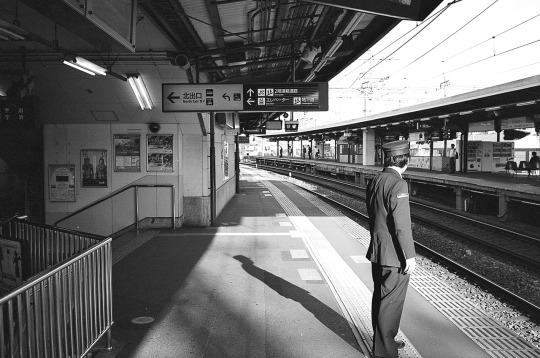#Chushojima
Photo
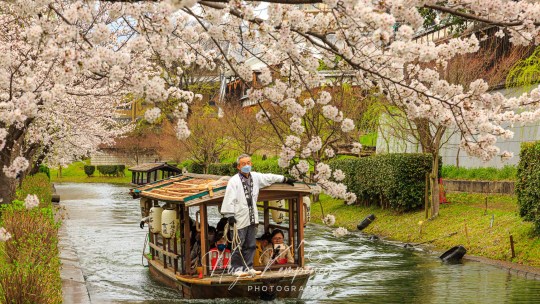
Cherry Blossoms Along the Benten Bridge in Fushimi-Ku, Kyoto City-Japan.
#Benten Bridge#Benten-Hama#Cherry blossom#Chushojima#Fushimi-ku#Hanami#Japan#Jikkokubune Canal Cruise#Kyo-Bashi Bridge#Kyoto#Motozaimoku-cho#Sakura#Sanjikkoku#Toyotomi Hideyoshi#Uji River#matsuri#十石舟めぐり#弁天橋#花見
79 notes
·
View notes
Photo
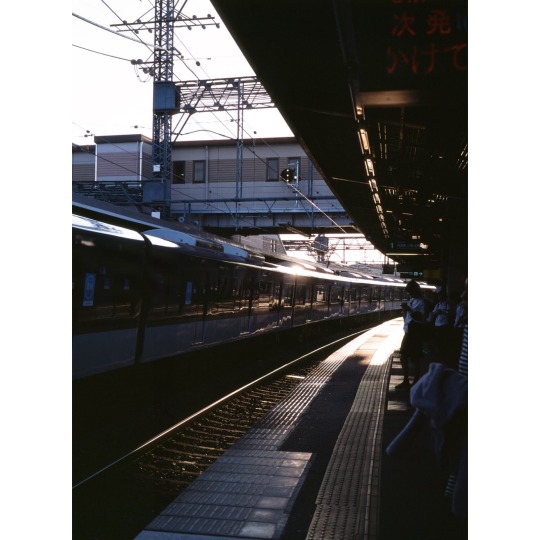
2019.10.08
#chushojima station#railway#kyoto#japan#jr#medium format#fujica#gs645#fujifilm#provia100f#slidefilm#鉄道#鉄道写真#鉄道好きな人と繋がりたい#中書島駅#中片幅#菲林#京都#日本
0 notes
Photo

Chushojima Station
Kyoto, 2019
3 notes
·
View notes
Photo

From Kyoto to Osaka: Chushojima and Yawatashi, Philippe Weisbecker, 2002
© of the artist - via: kvadrat interwoven
6 notes
·
View notes
Text
Japan 2017: Kyoto and Uji
Kyoto was a world apart from Tokyo. Less crowded, wider sidewalks, beautiful shrines, and shocking heat and humidity. And the place where I had the best Japanese green tea I’ve ever had and visited the most beautiful Japanese gardens.
More photos here.
Getting There
I took the Nozomi Shinkansen from Tokyo to Kyoto, which took about 2.5 hours. It was an incredibly smooth ride and allowed me time to chill out and read a book I brought along. I transferred at Kyoto Station to take the Karasuma line to the Karasuma-Oike station, which was near the hotel. I LOVE the Shinkansen. Now that I’m back home, sitting in traffic and avoiding Caltrain like the plague, I miss it. *cry*
While at Kyoto Station, I was able to purchase the Kansai Thru-Pass, which allowed me access to all subway lines, local railways, and all the city buses, which was extremely useful in getting around the city and seeing the sights. The local access passes can be purchased at the subway gates by vending machine, but the Kansai Thru Pass, which seems to offer access to more transportation lines, albeit at higher cost, must be purchased above-ground at the Bus Information Center, a small structure separate from the main station building itself, but on the station grounds, near the taxi area.
Villa Aneyakoji
I decided to use some Chase Sapphire points for my stay in Kyoto (remember, I like to eat and shop a lot) and decided on this hotel after reading some good reviews and getting an overall positive vibe about the place. This is a boutique hotel with only 7 rooms located on a quiet residential street near a couple major intersections, subway stations, and bus stations, making it a convenient place to stay for people who want to wander around the city.
I liked this hotel a lot. It wasn’t too busy due to its size and the staff were very friendly and helpful, particularly when it came to tea, teahouse recommendations and shopping for all things tea-related (my main concerns). My room was more than spacious enough for just me and had a nice table and chairs where I could spread out my stuff and do some nightly journaling and reading, which was especially useful as the hotel lobby was quite small and lacked a lounge area. Plus, the bathroom had a well-proportioned tub, which I always love.



Teahouses
I love tea so much that this section really has to come before the food section. I had some incredible tea while in Japan, but the best I had, outside of the matcha I had in Uji, came from these two teahouses. These teahouses were recommended by a helpful hotel employee who also loves tea and tea-related things and recs did not disappoint. The tea quality overall was excellent, the service was solid, and the ambiance was relaxing and tranquil. Pretty much what I’d expect from a teahouse, and perfect for a solo traveler to rest her feet and reflect.
1. Marykyu-Koyamaen
This teahouse is only about 2 blocks away from the hotel and I loved the atmosphere, tea, and sweets so much that I went here twice. The first time, I got some matcha tea with a roll cake (I can’t say no to roll cake. Plus, it was green!). Both were delicious and the matcha, which was smooth and slightly sweet, really put to shame the matcha I had had a day earlier at the Nijo Castle teahouse. I particularly loved that the teahouse opened up to, and my table faced, the small garden that offered just the right amount of greenery, slight breeze, and outdoors to the experience. It’s a great place to savor some tea and food and to lose track of time.



Later on in my trip, I came back for some gyokuro and baumkuchen, which while somewhat fluffy in texture, was surprisingly substantial. The gyokuro was slightly sweet with umami, making it a fulsome drink for a late afternoon.

The tea served here is grown in Uji, a city in Kyoto Prefecture located south of Kyoto city, that grows premium quality Japanese green tea. The quality here was indeed excellent and I picked up some genmaicha here for a friend. The store stocks quite a variety of matcha, some seasonally produced and some produced year-round, on offer, in addition to many other types of green teas, each type with a few different grades to choose from.
2. Iyemon Salon
The other teahouse I visited was a few blocks farther from the hotel and about half a block away from a main boulevard, so it also wasn’t hard to locate. It was a modern teahouse feauturing larger windows and a more airy feel, and also serves food. While I loved the traditional feel of Marykyu, I found this refreshing as well and enjoyed some shincha here on another late afternoon. Although, if I really had to pick a preference, I’d pick Marykyu just because I loved that the teahouse opened up to the garden. And I’m lazy and that one is closer. But, Iyemon would be very fun to go to with a small group of female friends.
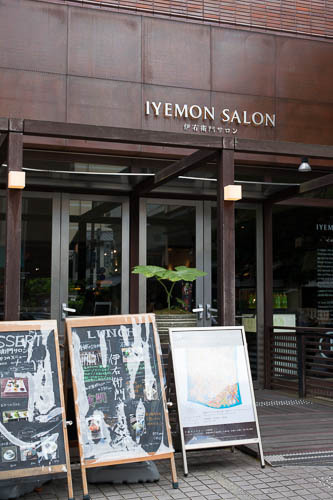



Uji and Mitsuboshien-Kanbayashi
So, my positive experiences at the teahouses prompted me to go to Uji for a short day trip. A hotel employee initially informed me that Uji was the premium tea growing region in Japan, a fact I didn’t know, and when I found a chunk of time available during my stay in Kyoto, decided to go. The hotel staff helpfully put together some information for me, such a particular tea shop I should visit and their contact information, transportation information, and a sake brewery I could visit, as it wasn’t too far away from Uji.
I took the subway from Nijojo-mae Station to Sanjo Station, where I transferred to the Keihan Main line to Chushojima, then took the Uji line to the Uji Station. The station is right next to the Uji River and the walk on the bridge across the river offered a beautiful view of the hills and water.

While I didn’t have enough time to check out the rest of the city, landmarks and shrines, I was able to sign up for the matcha tea-making class at Mitsuboshien-Kambayashi, supposedly the oldest teahouse in Uji, and conveniently placed on a small street next to the river. So, I arrived promptly for my class at 8.30 and proceeded upstairs to first check out the museum. The museum on the second floor contained a bit of history about the tea farm, from the vessels used to transport the tencha leaves in the olden times to photos dating over a hundred years ago of the family harvesting tea leaves and processing them. It was eye-opening looking at how tea production has and hasn’t changed over the years. The tea at this farm is still hand-picked, yielding in all likelihood superior quality to mass-produced tea that is indiscriminately machine-picked at other farms and other regions. Tobi, who works at the store, gave me an excellent tour of the museum.
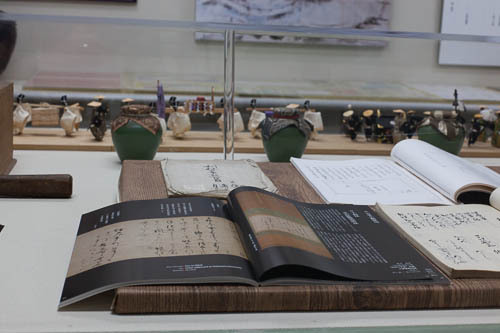


After learning more about tea production in general and particularly how this farm operates, I went to the third floor with Toby to learn how to make matcha, starting with whole leaves and finishing with the drink and a full belly. Ordinarily, matcha is sold already ground up in a small can; but here, because the business also owns and operates the tea farm, I was lucky enough to grind my own matcha powder for the class using whole tencha leaves. I totally nerded out over this!

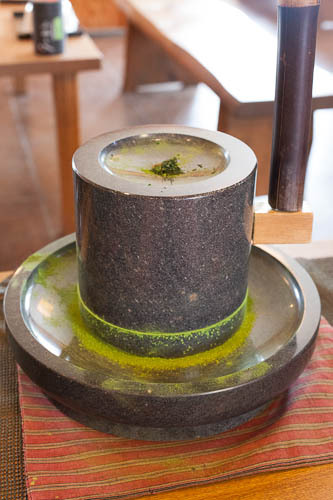
Using my own matcha, I learned how to make the tea, from knowing how much powder to use, to whisk technique, and other aspects of tea-making. I HAD SO MUCH FUN. The matcha I had here, while not the most expensive variety for sale at the store, was still superior to any matcha I’d had anywhere in Japan, imo.
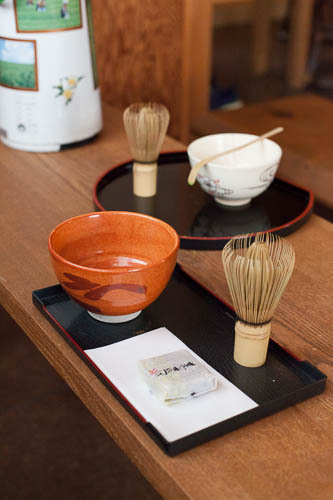


Downstairs, I went to learn more about the teas sold by the company and to see how matcha is currently ground using a machine. Also totally cool.

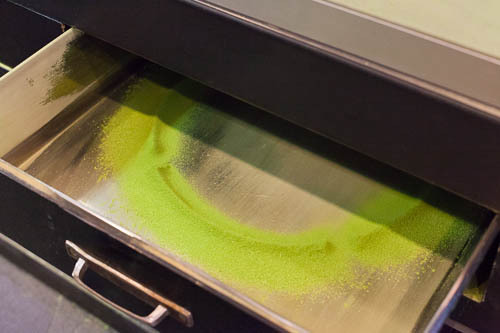
For serious tea drinkers out there, I’d highly recommend a visit to Uji. While I didn’t have time to visit other landmarks in the city, I hear they’re well worth a visit and most are within walking distance from the train station.
Food
1. goMacro Salon
I came upon this place by accident and I had my first meal in Kyoto here, which was, of all places, a vegan sesame-themed restaurant. Laugh all you want. I was skeptical too but hangry and this restaurant was near the hotel, so I gave it a shot. And it didn’t disappoint! Apparently, I do like many things sesame and I didn’t mind the vegan approach at all. I ordered the white sesame curry set, which came with a salad, some pickled vegetables and rice served with a sesame-based curry. The meal also came with coffee (I had iced) and a small dessert of sesame ice cream and chocolate cake. Delicious.
Plus, throwback to growing up in the 90s with American boy bands playing in the background, which initially gave me pause.

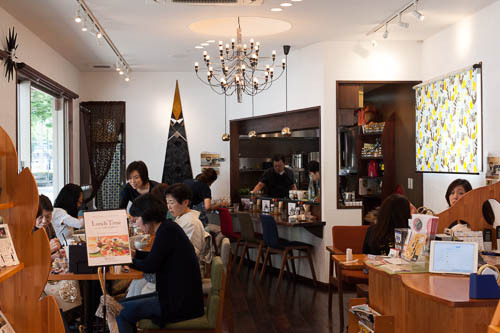

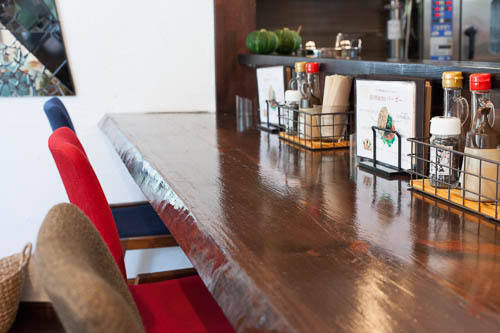
2. Honke Owariya
I had my first dinner and second to last meal in Kyoto here. I’d read about this online in a couple places and was excited to try it out. Luckily for me, it was also pretty close to the hotel. This restaurant started as a confectionary shop and later started serving fresh made soba noodles. I couldn’t wait to try the cold soba and ordered an egg omelette to start, then cold soba noodles with seasonal vegetable tempura. The noodles were deliciously chewy, quite different from what I had at home, and imo, best showcased when served cold. After I finished my noodles, a restaurant employee came by with hot water used to cook the soba and advised that I pour it into my dipping sauce bowl to make a broth. It was a nice way to end the meal.
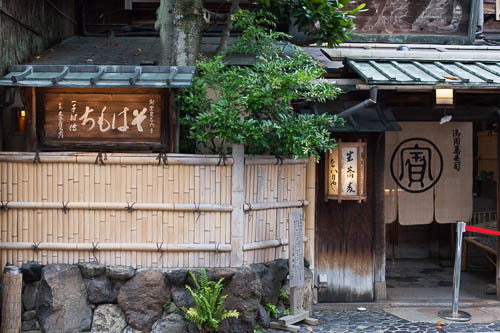
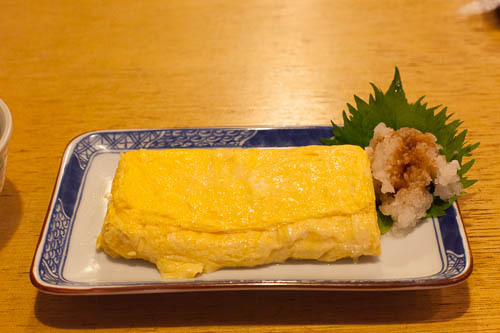

For my second meal here, I had cold soda noodles again, but this time with tororo yam and raw egg served on top. It doesn’t look like much, but it was extremely filling and delicious. I need to make this at home!
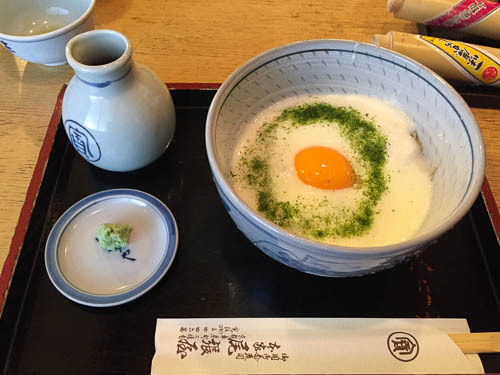
3. Omen Ginkaku-ji
I came here after visiting the Ginkaku-ji Temple, which was nearby. I was among the first customers to come in for the lunch rush, and I’m glad I got in early as it got pretty crowded by the time I left. I ordered the cold udon dipping noodles, which came with a variety of vegetables to eat with the noodles and place in the sauce. I wanted something light and fresh, and the cold udon noodles really hit the spot. They also had a good chew to them, different from any fresh udon I’ve had in the US, so it was an extremely satisfying meal.

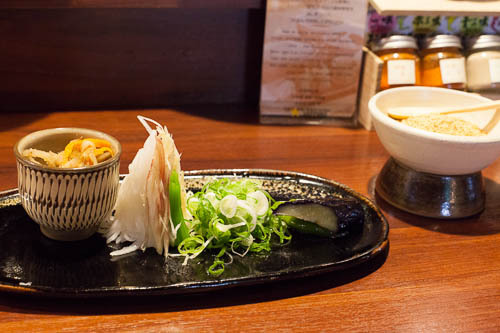
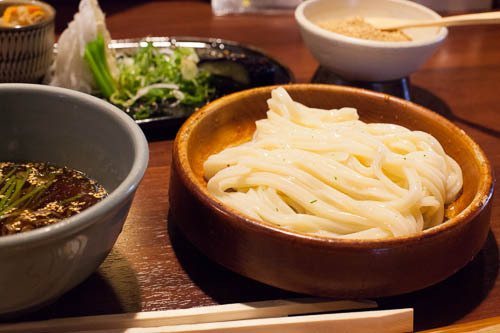
4. Karako Ramen
I went here one night for dinner when I was particularly hungry, and as usual in these scenarios, ordered too much food. It didn’t help that the portions were humongous and the ramen broth was extremely thick and heavy. I got the chicken karaage (humongous portions), most of which I had to take home with me, and the Kotteri ramen, which was ramen served in a thick, fatty broth. I think the food portions and broth would have been best suited to a dinner in winter, after a long day, but I still enjoyed myself and of course ended up eating too much out of embarassment. Still, a solid meal and very delicious, but I’d beware of ordering an appetizer unless I’m with someone next time.
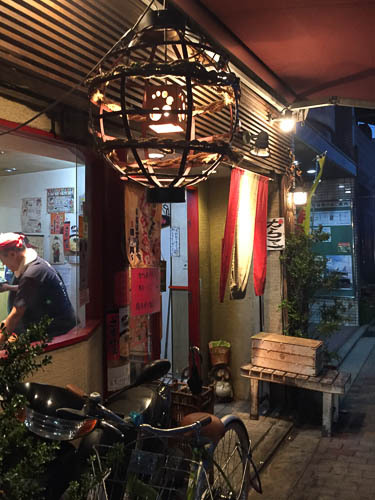


5. Hafuu
So, I’m mixed about this place. The wagyu, beef tongue and all the meat dishes in general were fantastic, and I mean excellent quality, well seasoned, and overall yummy. But, it was a bit too Western in taste and seasoning for me, and I didn’t know that until I’d ordered from the set menu. I ordered the Nikusenka set meal for dinner which included lightly roasted beef, grilled salted beef tongue, and 150g of Wagyu sirloin. These meat dishes, like I said, were absolutely wonderful and in true good-food fashion I ate too much. But the rest? Well, I wasn’t that much a fan. The salad was unremarkable and the soup, tomato bisque, while good, was not what I expected. And after all that meat I really didn’t need to have dessert (sorry). I’m not the type to travel halfway across the planet and want to eat American food, so this selection surprised me. Plus, the menu just said “soup” and “salad”, not the type, so I didn’t really know what I was in for. I read a few reviews online that said the style was delicious although a bit more Western, but it’s hard to understand what that means without having a comprehensive menu to check out.
Pate starter. Delicious. I also ordered a Kirin to round out the meal and it paired well with the steak.

Lightly roasted beef. OMG so good.

Tomato bisque. SIGH.
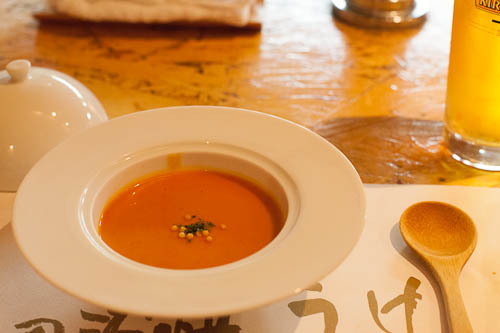
Grilled salted beef tongue. OMG SO GOOD.

Salad. SIGH.
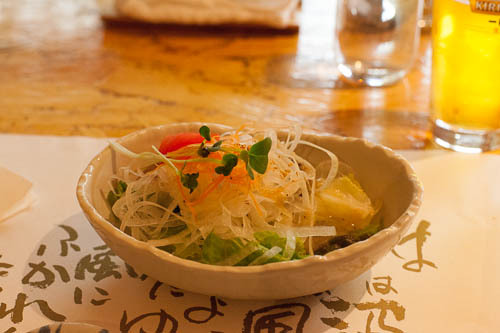
150g Wagyu sirloin steak, cooked medium rare. By this point I was actually mostly full, and sadly could not finish this. But it was at least as good as the Wagyu I’ve had back home, in terms of freshness and preparation, if not better, and at a fraction of the price.
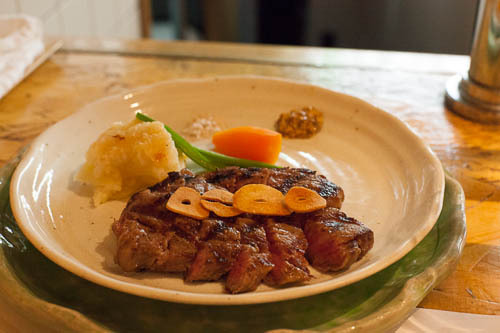
Dessert. I literally ate 2 bites and wanted to roll back to the hotel.
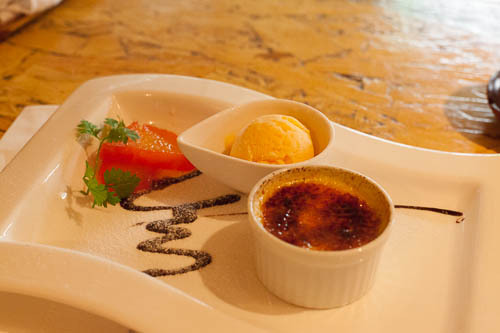
Also, I ate waaaaay more meat than I normally do, and this Wagyu was exceptionally good quality and cooked medium-rare, exactly as I like it, but it was still just more meat and more fat that I’m used to. So while I enjoyed my meal, I ate vegetarian for a couple days after.
I loved the meat dishes here, but maybe I’d order a la carte next time so I don’t get too much food and end up with soup/salad/dessert that I didn’t expect, or check out another place that cooks the meat more Japanese style.
6. Tousuiro
I finally made my way here on my last night in Kyoto. I LOVE tofu and for some reason, while researching for the trip, didn’t see that Kyoto is famous for its locally-made tofu. I’d stopped by here 2 nights before I left Kyoto only to find that reservations are required (tables fill up), but I was able to make a reservation for the night after, my last night.
The food here was delicious! Not only did I taste tofu expertly prepared in ways I hadn’t tried before, but the set menu selection was also perfect for me in terms of ingredient selection, portions, and overall pace of the meal. The set menu featured other vegetables and sashimi, making the meal well balanced, substantial, yet not heavy.
I opted for the Higashiyama set menu.
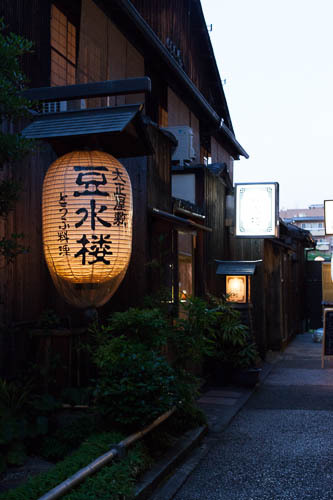
Kaede tofu with mixed green peas, tofu, and soya milk cream

More silken tofu with pickled vegetables.

Assorted sashimi (tuna and some other fish) and vegetables.

White gourd melon with soya milk.

Grilled tofu wrapped in kashiwabe.
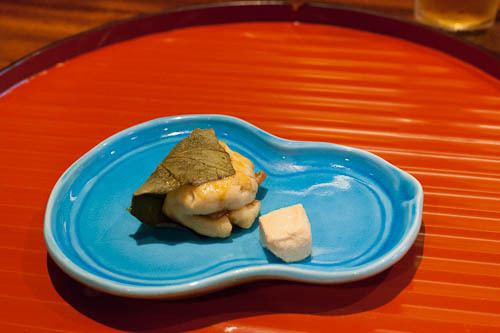
Giant claim and fresh ginger wrapped in tofu skin and fried.
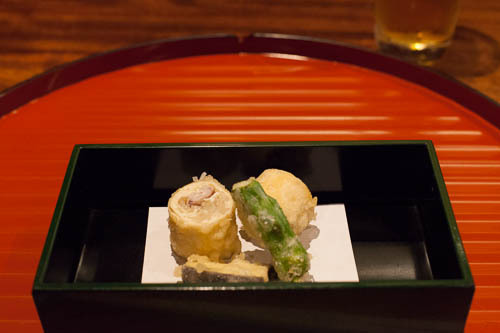
Rice with soup and seasonal pickles.

Aloe and soya milk sherbert with salt.

7. Matcha Ice Cream
It seemed that every temple had a souvenir shop area, and that every souvenir shop area sold matcha ice cream. In fact, I found dozens of vendors selling matcha anything throughout Kyoto, but my favorite morning activity was to visit a temple or shrine, wander to the souvenir shop area at the end of the walk, and get some matcha ice cream for breakfast. Then sit on a bench and eat like I was a kid again.

8. This Fried Fish Thing
So this is neither fish nor fried, but that was how this dessert was described to me when I tried it initially in NY earlier this year, and that’s pretty much what I call it now. It’s a starchy dessert filled with red bean paste and molded in the shape of a fish. Hence, “this fried fish thing.” It’s chewier than the one I had in NY, smaller in size (which allowed me to eat more other stuff) and less sweet, so overall, well balanced in texture and flavor. This particular one I got at a small dessert shop along the Philosopher’s Walk.

Sightseeing and Shopping
1. Ginkaku-ji Temple and Philosopher’s Walk
Of all the temples I visited, Ginkaku-ji and Ryoan-ji were my favorites, but for different reasons. The Ginkaku-ji temple itself is not the most interesting feature -- it’s almost a plain wooden structure and isn’t very impressive in other respects, but where this temple really shone were its location and gardens. Nestled at the base of the Kitayama mountains, northern Kyoto’s mountains, this temple had an expansive garden that was wondrous to wander around in. Every feature was interesting to ponder from every angle, allowing me to take a stroll and actually soak in the landscape, while also examining the rocks and trees individually from multiple perspectives. The garden itself also contained a small hike up part of the mountains and into the bamboo forest, which not only provided shade and a change of scenery (along with some lower temps), but also some elevation change and a nice view of Kyoto city. So much green! If only I could take this garden back with me.
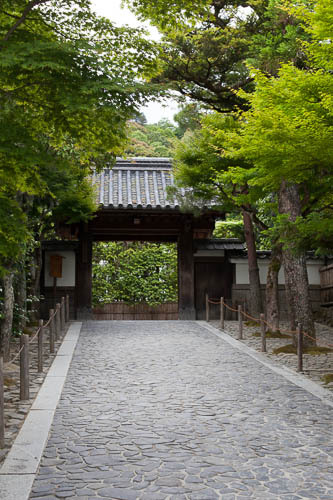

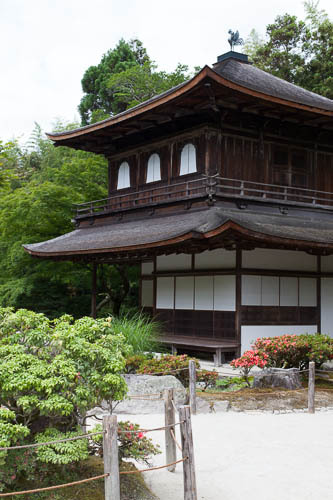




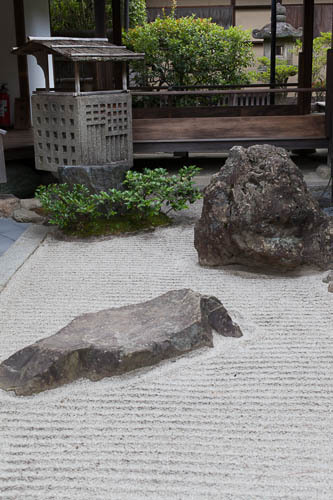

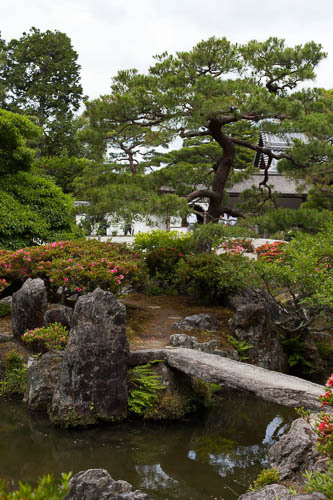

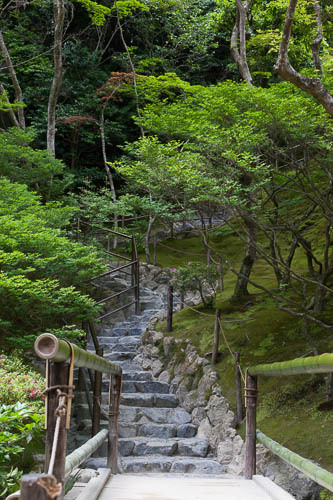
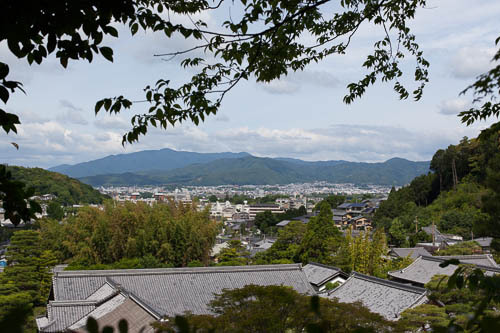
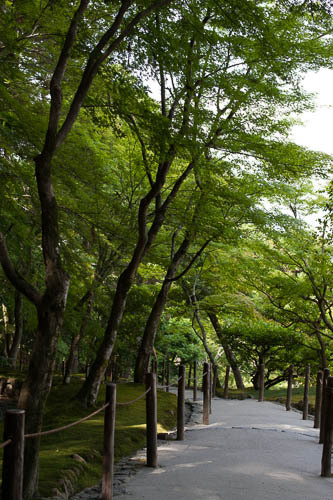
The Philospher’s Walk, outside of the temple grounds, provided a nice segue back into the city bustle, with its small creek and walkway running beside it, and shops along both sides.
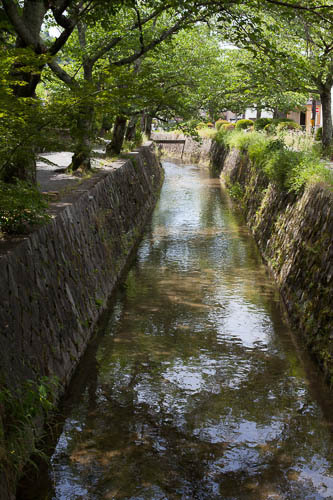
2. Ryoan-ji Temple
Another favorite. I seem to have a thing for Zen temples, and rock gardens in particular. I actually hung around this temple for quite some time, viewing the rock garden (15 rocks total) from multiple perspectives and enjoying the angles, lines, and textures. The rock garden is actually relatively small, which challenged my view of what one can design with limited elements and space.



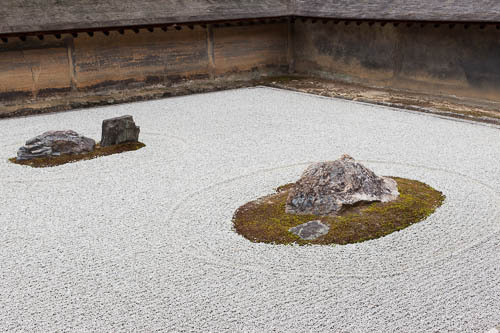



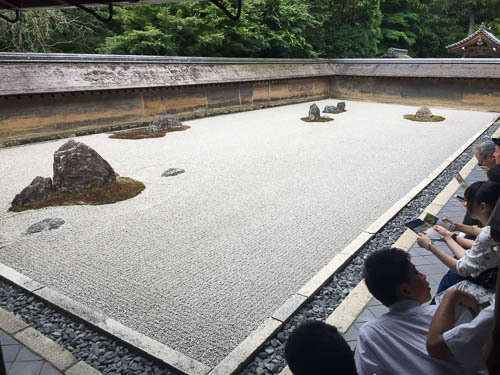

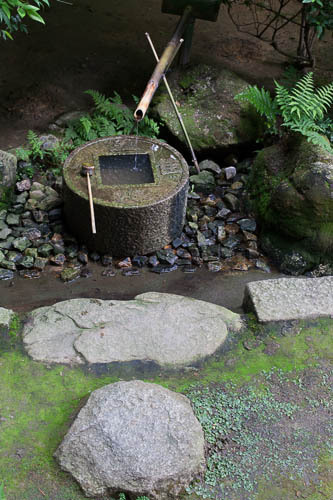
I visited this when I visited Kinkaku-ji Temple, as this temple is a 20 min walk west of Kinkaku-ji, mostly along flat road.
3. Nijo Castle
I really, really liked Nijo Castle. It’s close to the hotel so I wandered over early on in my stay in Kyoto, and it really did not disappoint. I think perhaps I would have loved it even more had I purchased the audio guide, but I wasn’t that impressed with the English translation version at the Tokyo National Museum so did not opt to pay extra for it here.
The signs on the castle grounds had English versions, which allowed me to learn more about the architecture, design, and layout of the castle and the gardens. Not only was the architecture so interesting and impressive, I was also impressed by the restoration and preservation of the structure. No photos were allowed of the interior, so I only got some shots of the exterior, which is a shame. I also paid to see the museum on the grounds, which contained originals of certain artifacts, including some painted screens used by the shogun.
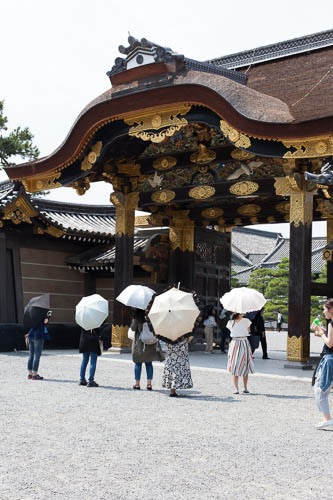


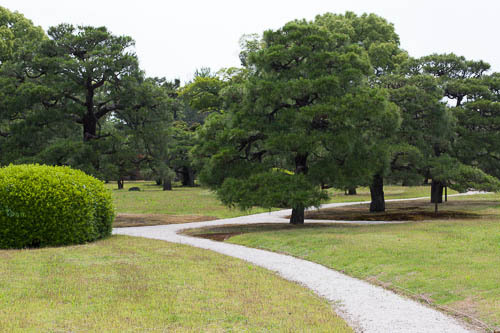




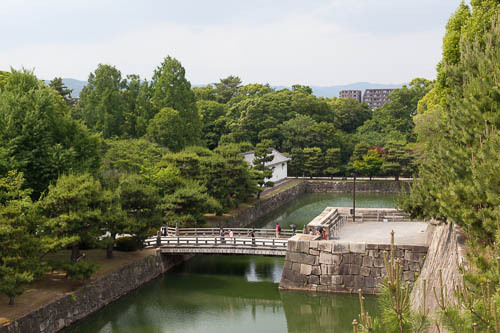

4. Kinkaku-ji Temple (near Ryoan-ji Temple)
Known as the Golden Pavilion, Kinkaku-ji Temple is a must-see. It’s covered with 0.5 micrometers of gold! While impressive to behold, this temple was by far the most crowded of the ones I visited, and the mosquitos were really out attacking everyone that day.
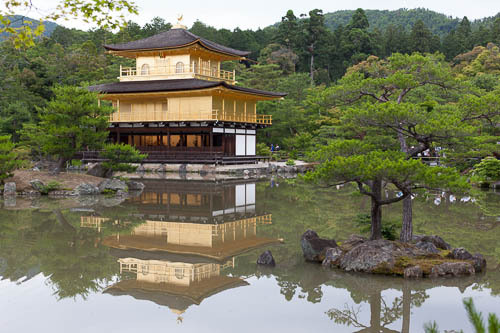
5. Kyoto Imperial Palace gardens
While I wasn’t able to actually enter the palace itself, I was able to wander around the surrounding gardens and chill out on a bench. Most of the garden is open gravel walkways with no shelter, so it was nice to find some shade on side pathways and hang out for a bit. The gardens are lush with many maples and other trees, providing a quiet escape from the city and sounds of traffic.
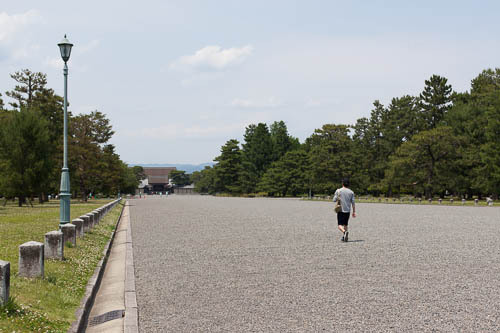
6. Gekeikkan Sake Brewing Co. (near Chushojima Station)
So, I didn’t check out all the other sights in Uji during my visit there because I wanted to go to this sake brewing company. This company is a short walk from Chushojima Station, where I had to get off to transfer back to the Keihan Main Line. Because of its location and the fact that the hotel employees suggested this brewery when hearing I was a fan of sake, I thought I’d stop by. I’m by no means a sake expert (or I would have done more research on this, duh), but I did enjoy walking around the brewery grounds and sampling some locally made sake, even getting a couple bottles of some sweet sake and shiso-infused sake. Fun times.
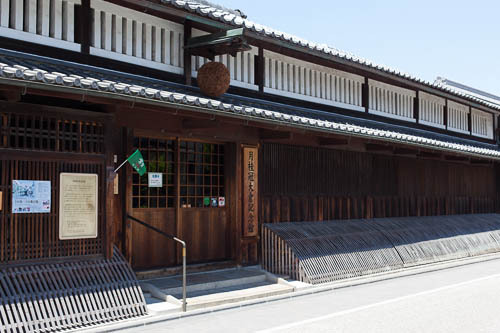

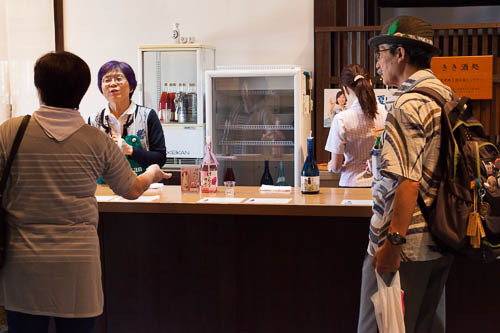
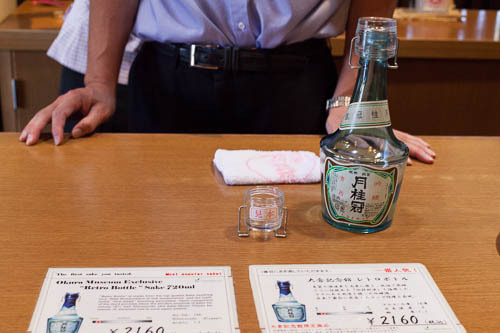

The museum was also really interesting, documenting the history of sake making at this brewery, from log books to brands for sake barrels, to sake vessels.
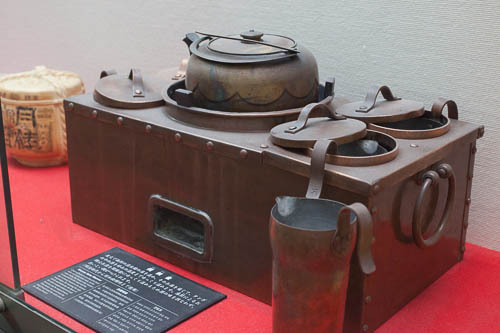

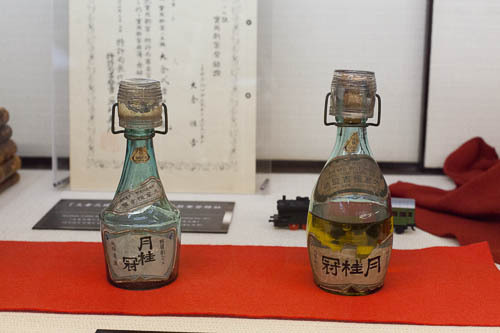
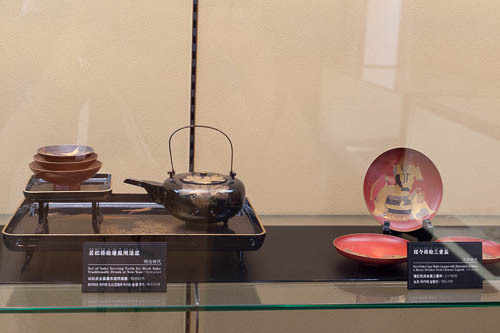

7. Nishiki Market
This market was within reasonable walking distance from the hotel and also close to some other shops, so I stopped by to check it out. The market not only sells all things Uji matcha at one store near the start of the market (where I bought some warabi dumplings!), but also sells other fresh and dried foods, including seafood, and random souvenirs, such as one shop that only sold chopsticks. While I had some good fun perusing these vendors, I didn’t stay too long as many of the vendors sold fresh food (I was too stuffed to eat more or really could not take back that huge raw steak) or really touristy stuff. I definitely think it’s worth a visit, but I had a better time checking out the Tsukiji Outer Market.

Buy matcha things here!!
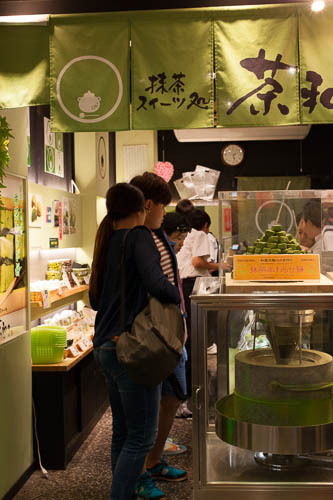



8. Factory Tsunesaburo (Philosopher’s Walk)
I encountered this lacquerware shop while strolling on the Philosopher’s Walk, and it piqued my interest when I saw the large chopstick collection for sale. I’d been looking for some special, high quality chopsticks to purchase for gifts for certain friends, so I stepped in to take a look. I was impressed by the selection of lacquerware, ranging from bowls, sake saucers, to tea accessories, to chopsticks. All are handmade by local artisans, and I loved seeing the variety and craftsmanship.




9. Ippodo Tea Company
The main store and tearoom was within reasonable walking distance from the hotel (not an enjoyable walk, since it was so blistering hot). I came here for some afternoon matcha so I could chill out, so I’d have one more matcha data point (nerd, god), and also so I could check out their teapot selection, on recommendation from a helpful hotel employee. I’d been looking for a small teapot (under 200 cc or thereabouts) and some small cups, in simple white porcelain, and I found just the kyusu here.
10. Karakusaya
This furoshiki store was pretty close to the hotel as well, so I headed over here to check out the selection. This store was very different from Musubi; while Musubi carried almost exclusively cute, contemporary designs, this store sold contemporary designs as well as many that used more traditional motifs and colors, opting for many earth tones and darker blues for some designs. I loved browsing here.
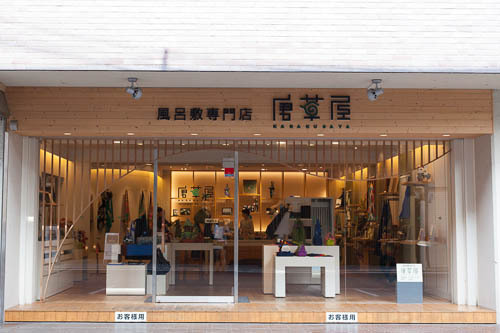
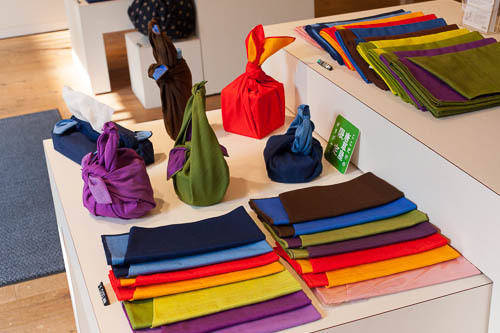

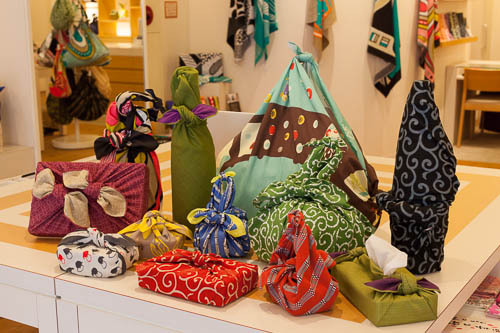


11. Random shops around town
My favorite part about Kyoto was walking to or from some destination and seeing some interesting shop or window display, enticing me to go in. I never knew what to expect and loved being surprised by novel (to me) shops around the city. Some of my favorites were porcelain and stationery shops, which lured me in with their selection and craftsmanship.
#japan#vacation#kyoto#uji#gekeikkan sake brewery#sake#chushojima#karakusaya#hafuu#honke owariya#omen ginkaku-ji#ginkaku-ji temple#ryoan-ji temple#kinkaku-ji temple#matcha#ice cream#fried fish#furoshiki#shopping#souvenir#nijo castle#kyoto imperial palace#japanese garden#bamboo forest#pond#rocks#Zen temple#Zen rock garden#food#dinner
0 notes
Video
JR奈良線 221系 普通京都行 山科川を渡る 2017.05.11
1M方式の通称220系。六地蔵駅付近
2400系2456F 準急淀屋橋行 中書島駅
京阪中書島駅 2017.05.11 特急3000系、準急2400系 Keihan Chushojima St.まとめて
<プレイリスト>
鉄道動画集2017年 Railway Movies
221系2017年 JR West 221 Series EMU
JR Nara Line 奈良線2015年以降
2 notes
·
View notes
Photo

Saké de Fushimi - Le quartier des brasseurs traditionnels de Kyoto
Le quartier du saké de Fushimi désigne une zone ancienne de brasseurs située entre les gares de Fushimi-Momoyama et de Chushojima, au sud de Kyoto. Les rues parfumées par l’arôme du riz fermenté abritent également un épisode marquant de la fin de l'époque féodale au Japon, avec le personnage de Sakamoto Ryoma (1836 - 1867).
Lire la suite sur Kanpai.fr
https://www.kanpai.fr/kyoto/sake-fushimi
0 notes
Text
I'm at Chushojima Station (KH28) (中書島駅)!
I'm at Chushojima Station (KH28) (中書島駅)!
0 notes
Photo

Cherry Blossoms Along the Benten Bridge in Fushimi-Ku, Kyoto City-Japan.
#Benten Bridge#Benten-Hama#Cherry blossom#Chushojima#Fushimi-ku#Hanami#Japan#Jikkokubune Canal Cruise#Kyo-Bashi Bridge#Kyoto#Motozaimoku-cho#Sakura#Sanjikkoku#Toyotomi Hideyoshi#Uji River#matsuri#十石舟めぐり#弁天橋#花見
19 notes
·
View notes
